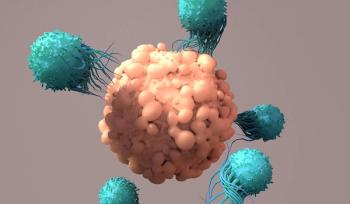
- BioPharm International-08-01-2004
- Volume 17
- Issue 8
Final Word: Plant-Made Pharmaceuticals
There is no current capacity crunch due to increased investments in new facilities.
Manufacturing of complex biopharmaceuticals in plants is an attractive alternative to animal cell culture, and there are several reasons for choosing the "green alternative." One reason is that the natural properties of plants can lead to improved product quality and even increased potency. Also, there is no current capacity crunch due to increased investments in new facilities. Cost reduction, through simple upstream and downstream processes, and safety advantages are also factors. Cultivation conditions in photosynthetic systems are much more flexible than in animal cell culture. This includes broad temperature and pH-range as well as low oxygen content, allowing process optimization according to protein requirements. In many cases, plant-made pharmaceuticals allow patent avoidance, which may be another consideration in selecting a particular production system.
Sabrina Wagner
Production costs were a major driver of the first steps in molecular farming. Tobacco and corn were introduced for production of monoclonal antibodies (MAbs), enzymes, and other products, including lactoferrin, collagen, gelatin, and vaccines. While it's true that it is easier to grow proteins from corn than from the leafy tissues of plants, productivity from corn does not yield significant cost reduction. Separation of corn for molecular farming from corn for food and feed production also is a major challenge.
Although several pharma and biotech companies run plant expression programs, none of the products has made it to market yet. Plant-made proteins that have entered clinical trials are, for the most part, not glycosylated or administered orally, including MAbs and fragments thereof, gastric lipase and lactoferrin as well as hepatitis B and rabies vaccines.
Containment is an important factor in choosing plant species. The measures range from simple geographical separation (as applied to rice and safflower), to expression in chloroplasts that are not transferred by pollen, to transgenic sprouts in airlift bioreactors to aquatic plants in photobioreactors like lemna and moss.
Purification is another major criterion for selection of an expression system, as this downstream process is a major cost factor. Expression in seeds facilitates product recovery. Product secretion into simple plant cultivation media is the most straightforward approach, resulting in a few simple purification steps. In animal cell culture, viral contamination is avoided by extensive virus removal, which adds to the downstream process. However, no plant viruses are human-pathogenic.
A safety issue for injectables is glycosylation and the immunogenic potential of plant-specific sugar residues. The complete removal of the two-plant residues from the N-glycosylation pattern of plants has been achieved in moss. Homologous recombination removes the corresponding xylosyl- and fucosyl-transferase. Moss is the only plant that shows a high frequency of homologous recombination, allowing this direct approach. Galactosyltransferase has been successfully introduced in different plant species, including moss, resulting in terminal galactosylation, which is typical for MAbs. The degree of galactosylation and the lack of fucose allow production of MAbs with increased effector function, such as increased antibody-dependent cellular cytotoxicity.
Articles in this issue
over 21 years ago
Editorial—Welcome to Our PMP Seriesover 21 years ago
Outsourcing Report: Contract Playersover 21 years ago
Producing Affordable, High-Purity Waterover 21 years ago
StreetTalk: PMPs: Easy as 1-2-3?over 21 years ago
Applications: A Total Water Purification Systemover 21 years ago
Green Plants as Biofactories for DrugsNewsletter
Stay at the forefront of biopharmaceutical innovation—subscribe to BioPharm International for expert insights on drug development, manufacturing, compliance, and more.





